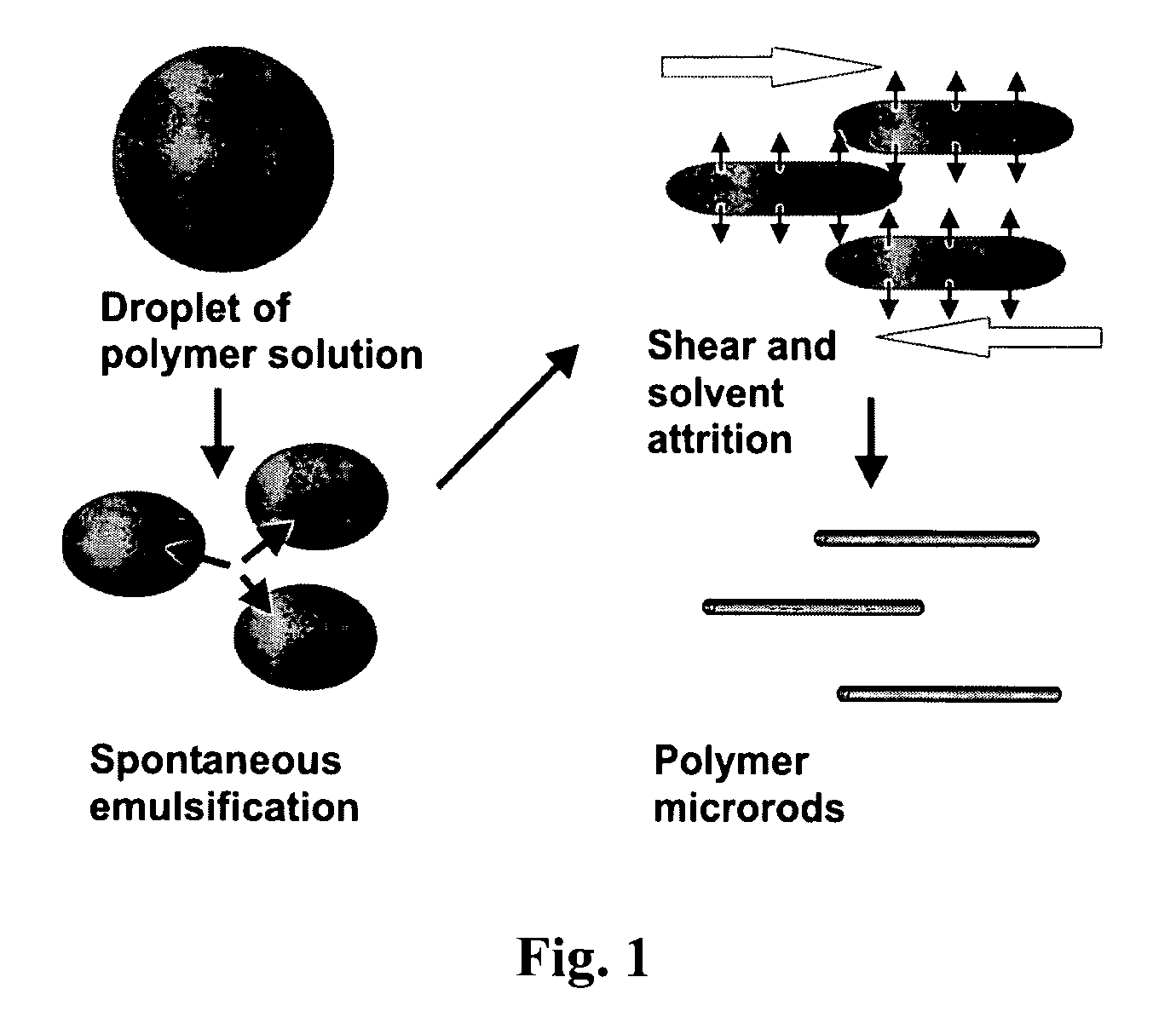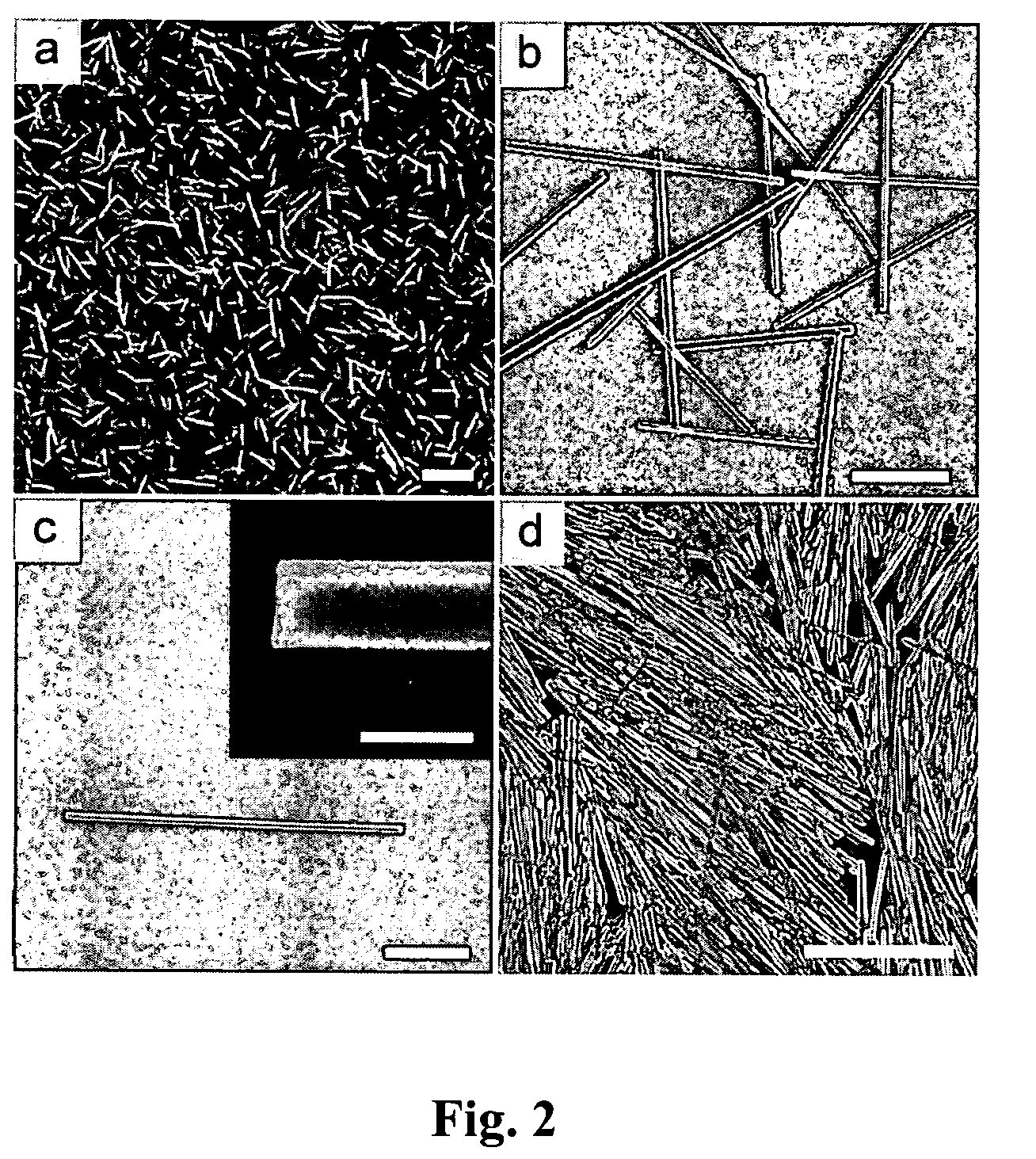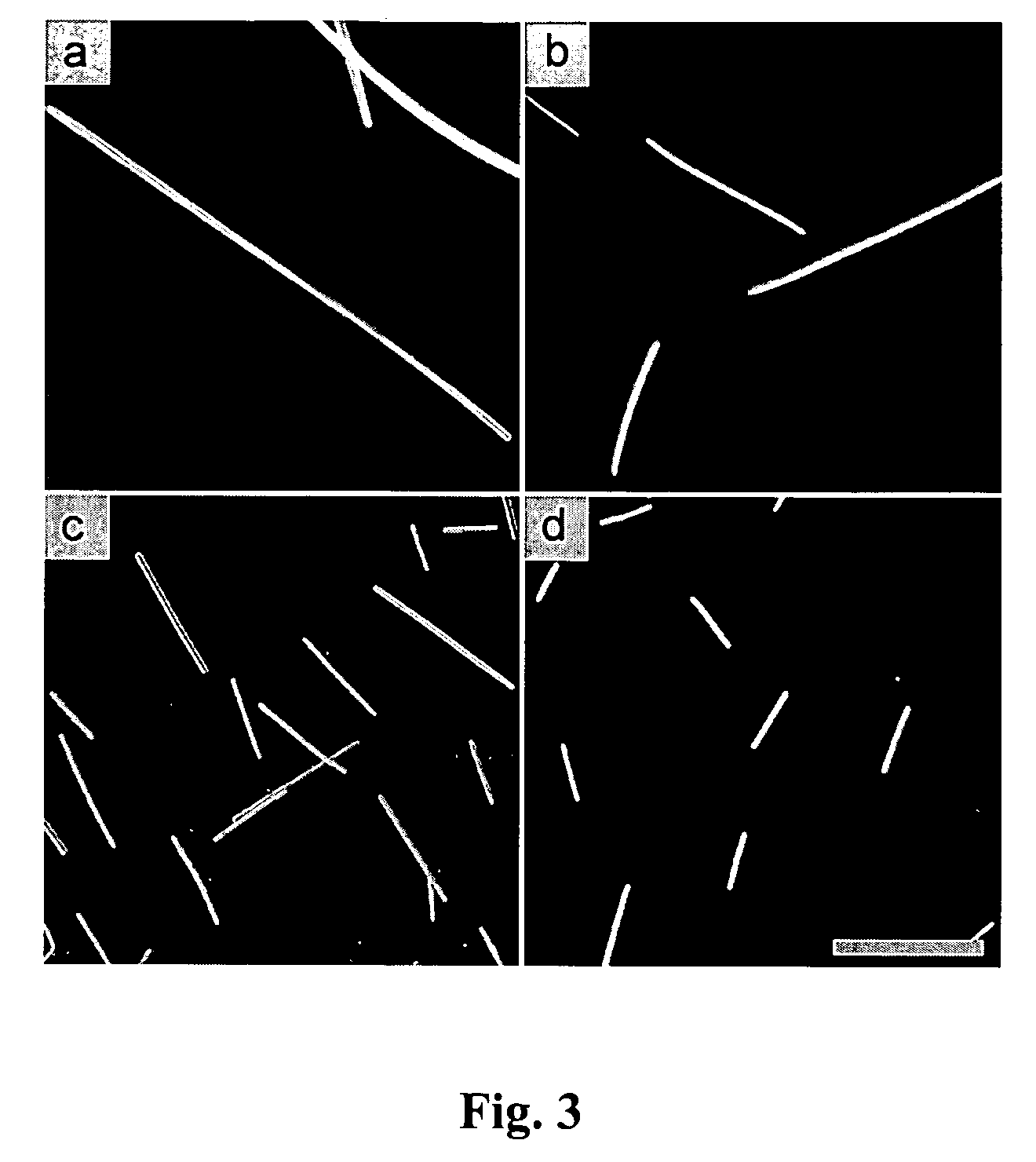Process for preparing microrods using liquid-liquid dispersion
a technology of liquid-liquid dispersion and microrods, which is applied in the direction of microcapsules, filament/thread forming, and prosthesis, etc., can solve the problems of limited synthesis of large amounts of polymer cylinders using a template method, expensive procedures, and additional treatment procedures, etc., to achieve high synthesis efficiency, simple preparation method, and high degree of automation
- Summary
- Abstract
- Description
- Claims
- Application Information
AI Technical Summary
Benefits of technology
Problems solved by technology
Method used
Image
Examples
example 1
Microrod Synthesis
Equipment and Materials
[0067]The photocurable epoxy resin SU-8 (widely used as negative resist for photolithography) was purchased from MicroChem, MA, as 63 wt % solution (SU-8 25) in γ-butyrolactone (GBL). The resin was used as received or diluted further with GBL. Analytical grade glycerin or its mixtures with ethylene glycol, ethanol, methanol, dodecane (all from Fisher Scientific, PA) and isopropanol (LabChem. Inc. PA) were used as dispersion media. GBL is soluble in all of the above solvents, which is a necessary condition for the microrod synthesis. Polystyrene used in the polymer mixtures was obtained from 1 μm polystyrene sulfate FluoSpheres® (Molecular Probes, OR). The dried latex was dissolved in GBL prior to mixing with SU-8 solution.
[0068]Mixing of the phases was performed by a Servodyne electronic mixer (Cole-Parmer, IL) providing high speed of stirring (150-6000 rpm) at low torque. It was equipped with a high-shear impeller of diameter 50.8 mm (Lighti...
example 2
Synthesis of Microrods with Embedded Magnetic Particles
[0082]BioMag® supermagnetic spheres (Bangs Labs, Inc., US) with mean diameter of 1.8 μm, received as 5.4 wt % suspension in water, were used in the fabrication of magnetic microrods. The magnetic particles comprise of about 90 wt % iron oxide core, covered by a silane layer. Preparation of magnetic SU-8 microrods was carried out following the same procedure as for pure SU-8 rods described above in Example 1.
[0083]The supermagnetic particles were first separated from the water phase in a magnetic field and the supernatant was removed and replaced by ethanol. This procedure was repeated three times, after which the BioMag particles were dried for the complete removal of the ethanol, and dispersed in GBL. This particle dispersion was then mixed with SU-8 solution in GBL (63 wt %) to yield a mixture containing 1.55 wt % magnetic particles and 48.6 wt % SU-8. The particle / SU-8 mixture was used as initial polymer solution in the micro...
example 3
Microrod Synthesis and Use as Foam Stabilizer
Microrod Synthesis
[0084]The polymer rodlike particles used for foam stabilization were synthesized from epoxytype photoresist SU-8 (MicroChem, MA) using the liquid-liquid dispersion technique described above. Typically, 0.2 mL of 50 wt % solution of SU-8 in GBL (Aldrich, Wis.) was injected into 50 mL of a 1 / 1 v / v mixture of glycerol and ethylene glycol (Fisher Scientific, PA) subjected to a viscous shearing by an impeller. The polymer solution was emulsified, and the emulsion droplets deformed and solidified into cylinders with high aspect ratio. The polymer particles were strengthened by cross-linking with UV light. Then the dispersion was diluted twice with deionized (DI) water (from a Millipore RiOs 16 RO unit) and filtered through a 0.45 μm Durapore membrane (Millipore, Mass.) to separate the particles. The SU-8 rods collected on the membrane were repeatedly washed with DI water to remove any organic solvent traces and then suspended ...
PUM
| Property | Measurement | Unit |
|---|---|---|
| average aspect ratio | aaaaa | aaaaa |
| diameter | aaaaa | aaaaa |
| length | aaaaa | aaaaa |
Abstract
Description
Claims
Application Information
 Login to View More
Login to View More - R&D
- Intellectual Property
- Life Sciences
- Materials
- Tech Scout
- Unparalleled Data Quality
- Higher Quality Content
- 60% Fewer Hallucinations
Browse by: Latest US Patents, China's latest patents, Technical Efficacy Thesaurus, Application Domain, Technology Topic, Popular Technical Reports.
© 2025 PatSnap. All rights reserved.Legal|Privacy policy|Modern Slavery Act Transparency Statement|Sitemap|About US| Contact US: help@patsnap.com



